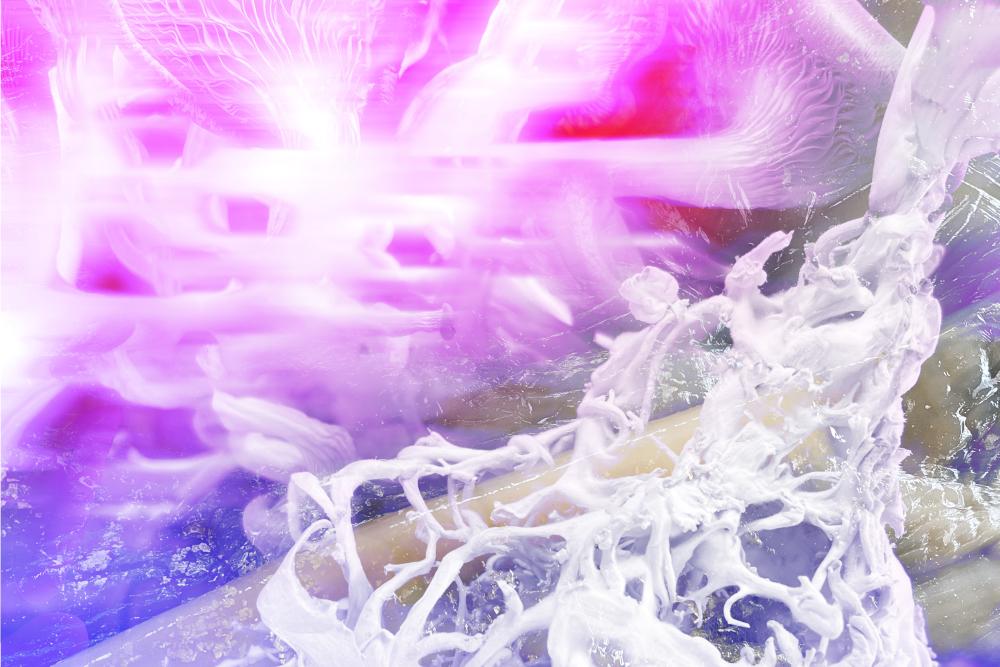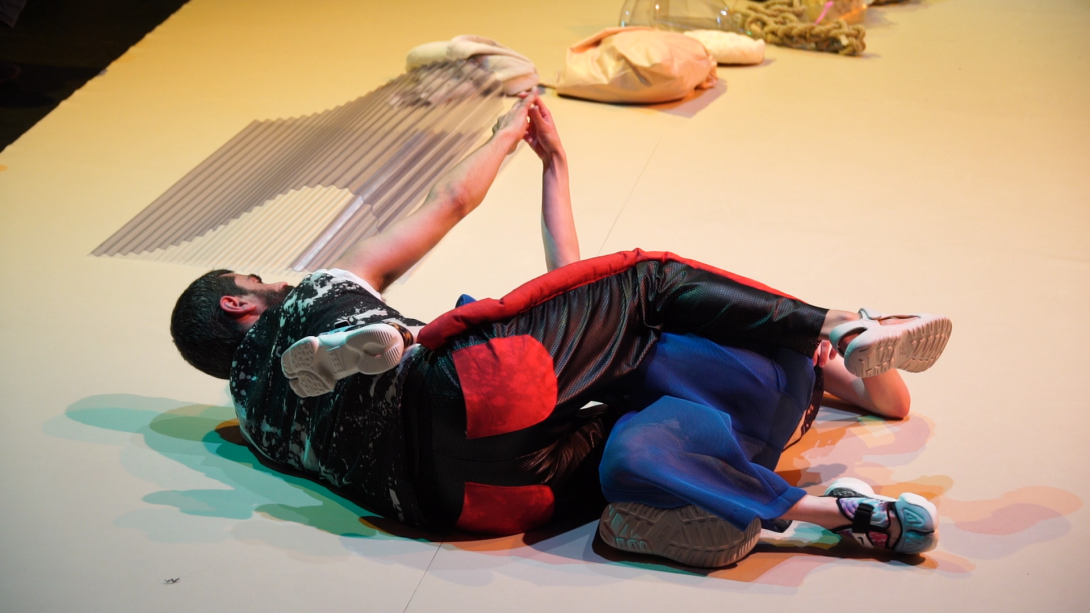MOLD
Here you find a short description of the performance and the credits.
Between wild fermentation and sculptures
Excertps from the interview with Sara Manente by Wilson Le Personnic (MaCulture.fr, 09/08/2022).
Currently your work focuses on the aesthetics and the ethics of the intersection between live arts and live biological cultures. Could you share the major reflections that permeate this particular line of research?
This intersection has to do with matters of taste and ecological matters: the relationship between contagion and immunity, the phenomenology of the repulsive and the nauseating, the notions of entanglement, hybridization, domestication. After giving birth, I wanted to continue working at home and to think with and from the body, instead of going to the dance studio. Pregnancy is an experience that modifies the understanding of the body, of its limits, as well of the general meaning of ‘self’: my body is not simply mine, it can be colonized and depend on other bodies as a matter of necessity. I began looking into different fermentation techniques and reading books on eco-feminism, post-humanism and neo-materialism (Donna Haraway, Paul B. Preciado, Elizabeth Povinelli, Elizabet Wilson, Lynn Margulis, Anna Tsing, Deboleena Roy, Aimme Bahng, Jane Bennet, among others). As a dancer and artist, I identified with loads of things and could certainly see my practice in relation with my environment. For instance, when we speak of ‘wild fermentation’ there are several aspects at play: watching over a process or taking care of it without killing or exploiting it; creating the conditions for something to happen, and letting it follow its own way. In yeast there are figures such as the ‘mother’ or the kombucha scoby [a symbiotic organism made of bacteria and yeasts], which may relate to how dance practices are shared and how transformation affects different bodies. Currently, I am also interested in other questions, such as durability in performing arts practices: what does it mean to keep a work or a practice alive? What can it mean to preserve or to ferment that work/ practice? How can we make that work/practice more durable for artists?
How does MOLD fit into that research? How does this project continue and develop those reflections?
While working on fermentation I started to grow skins of kombucha scoby […]. Kombucha contains probiotics for our intestines, but it has a morbid aspect that is very similar to animal skin, or parchment. It is a symbiotic organism made of bacteria and yeasts with a powerful, sweetish, repulsive smell. The title MOLD came up relatively early in the process as its double meaning synthesizes the uneven and paradoxical forces that interest me. The English word ‘mold’ refers both to a biological organism (…) and a sculptural mold (…) On the one hand, it designates a mycelium, or a fungus: a network of threads that develops in a seemingly uncontrollable manner as it colonies, infects and digests its own environment; on the other, it refers to a mold, a thing used to make a sculpture and explore a specific form.
The polysemy of the word ‘mold’ was one of the axes of your work. How did you deploy that double meaning in your practice?
I started to work from the word ‘mold’ by letting myself be guided by its different semantics. Its polysemy evoked a chimerical form (in Greek mythology, chimeras are usually represented as creatures with a lion’s head, the body of a goat and the tail of a snake. As a metaphorical figure, the chimera is used to describe that which is made of different parts, and that which is perceived as unlikely. In biology, genetic chimerism is an organism made of cells with two or more distinct genotypes.) My attention was drawn to the chiasm between those two different meanings: the container and the network. On the one hand, the mold is a container that attributes a form to something, a negative form that must be filled, a structure that supports and crosses the body, a dimension of governance whose action may be based on material and immaterial forces. This object is the mother, the matrix that is able to generate originals and copies of the original. On the other hand, a fungus that forms a network of connections by producing spores is also called mold. In that sense, mold can be seen as a process of contamination that eludes any control, an infiltrating cybernetic system of relations that implies communication and retroaction mechanisms. This is a technology as refined as it is wild, non-cultivated and non-governable. To mold in that sense means to form, to sculpt, to frame, to shape, to control, to create, to influence and affect. We can transpose this relationship to our way of reproducing social behaviours, personal habits and even ways of dancing, because the experience of ‘another’, as well as of time, desire, influences, can be understood as forms of contamination

